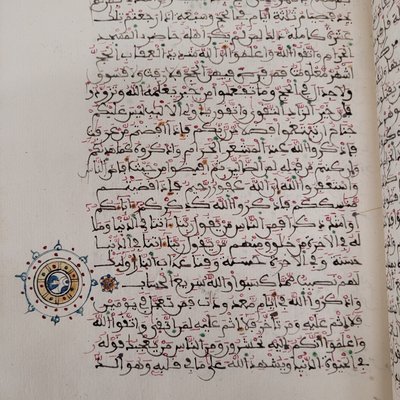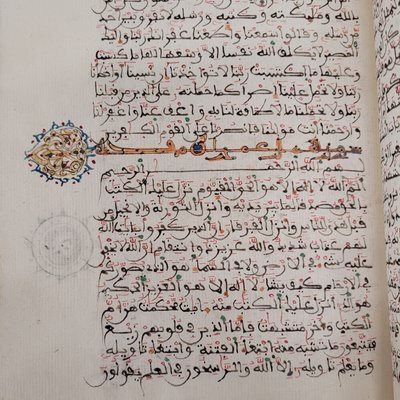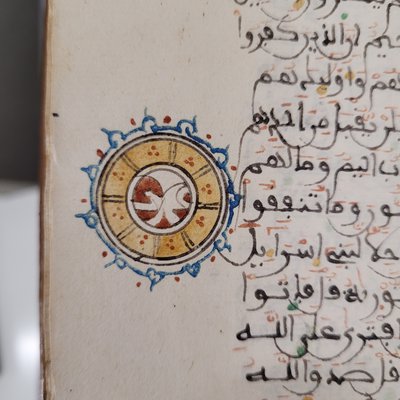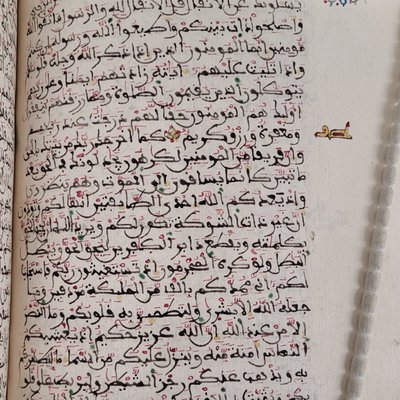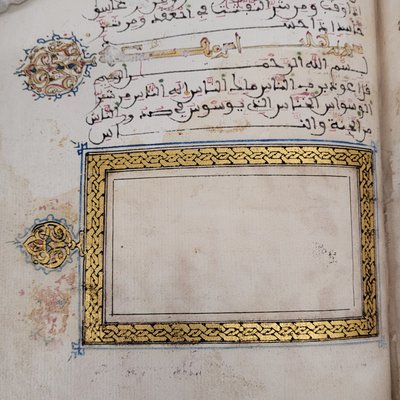April 2022
This year the month of Ramadan, the ninth month of the Islam’s lunar calendar, falls into April, lasting from 1 to 30 April 2022. It is believed to be the month in which the Qur’ān was revealed to the Prophet Muhammad.
To honour this important time in the Muslim calendar, our book of the month is one of St John’s five Qur’ān manuscripts. MS 107 is of North African provenance, probably from Morocco, dating from the late 16th or early 17th century. This is based on the decorations which suggest a production during the Sa’did dynasty (1511-1659) in Morocco. Wikipedia describes the Sa’did family as the first Arab Sharifian dynasty to rule Morocco since the 10th century. Resisting the Ottoman expansion, Morocco remained the only North African area outside the Ottoman Empire. The Sa’did family was a great patron of the arts and architecture. Some of the most celebrated monuments of Moroccan architecture were built in their reign.
While MS 107 is not believed to be a professionally made Qur’ān, great care has nevertheless been taken during its production. Titles are written in the Kufic script with its angular, rectilinear letterforms and horizontal orientation; it has been the preferred script of Qur’ān transcriptions and architectural decorations. The main text is written in a medium-large Maghribī script. Developed in North Africa and Andalusia, it has rounded letter forms, extended horizontal features, and final open curves below the baseline, despite having been influenced by the Kufic script. Vocalization is added in red, while green or yellow dots mark text stops.
The volume was donated to St John’s College by Archbishop William Laud (President of St John’s 1611-21, Chancellor of Oxford University 1630-41, Archbishop of Canterbury 1633-45). In total, he gave 15 Oriental manuscripts to the College and eight of these, including MS 107, had previously been owned by the courtier and diplomat Sir Kenelm Digby (1603-65). His provenance has been crossed out in most of these eight manuscripts.


